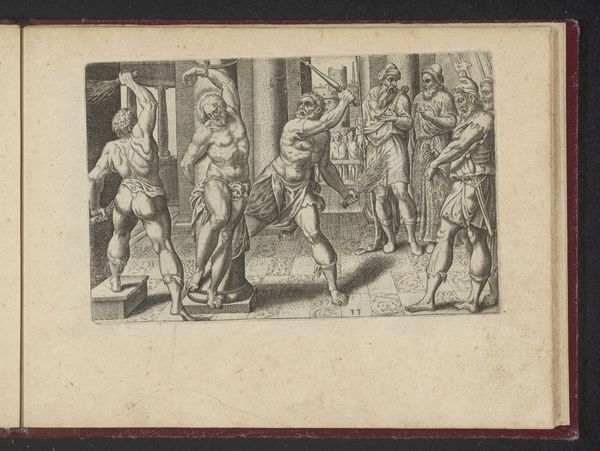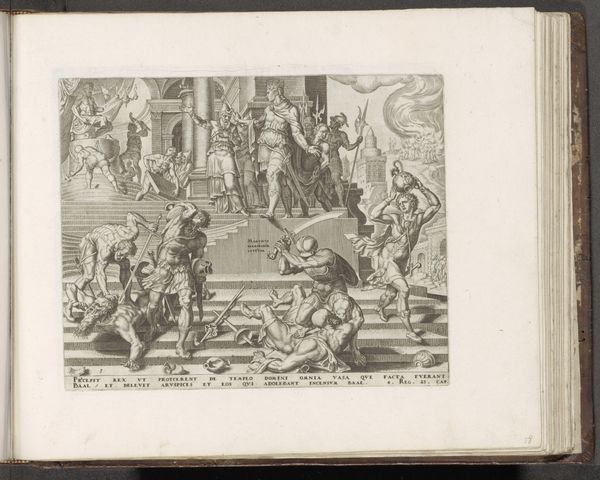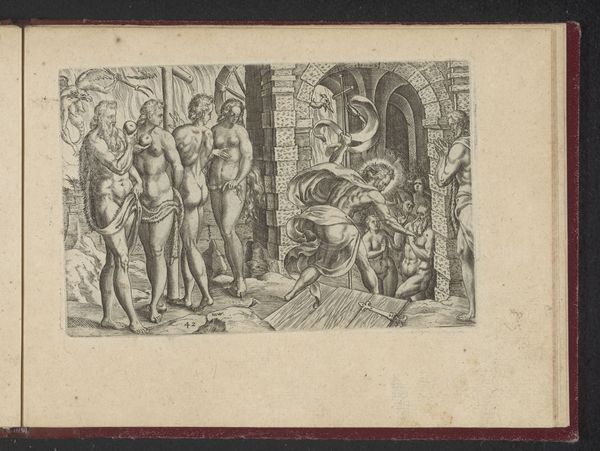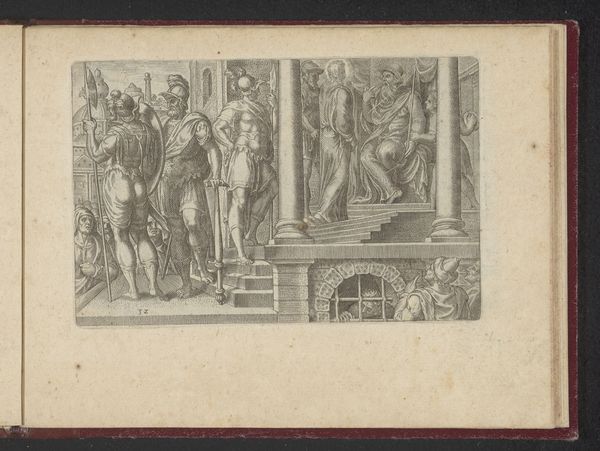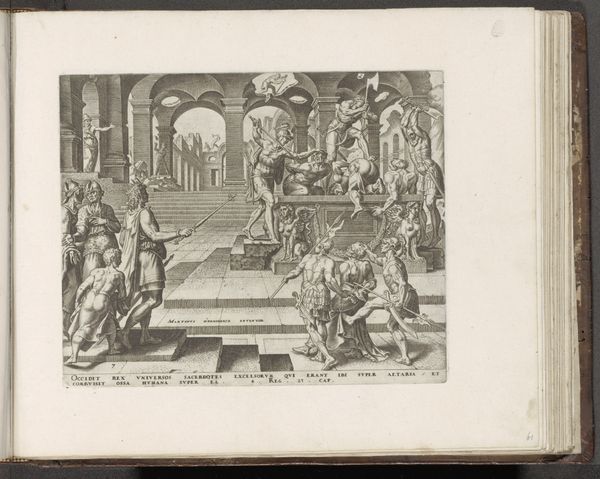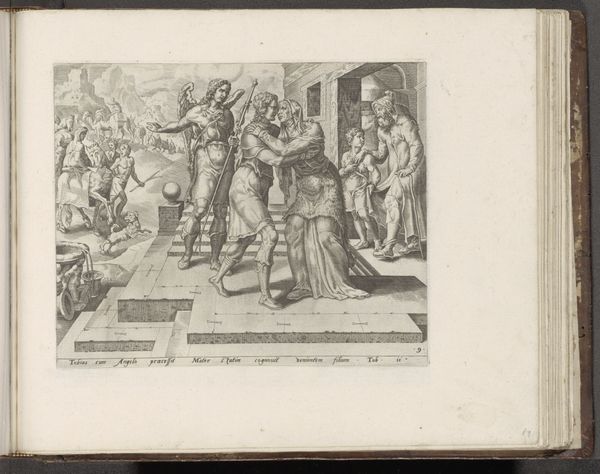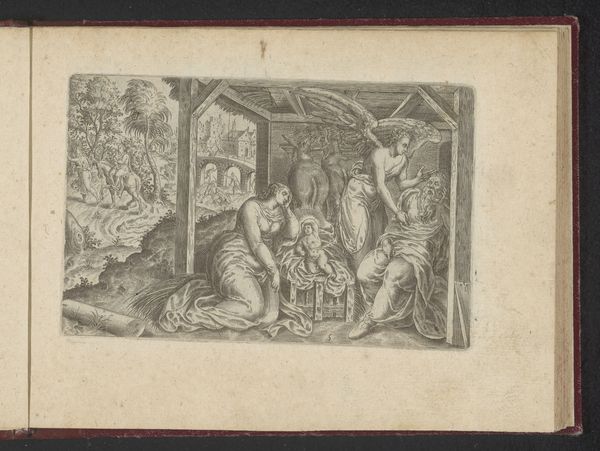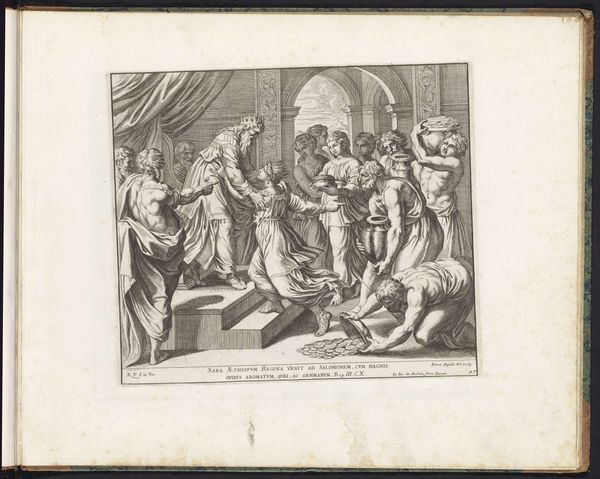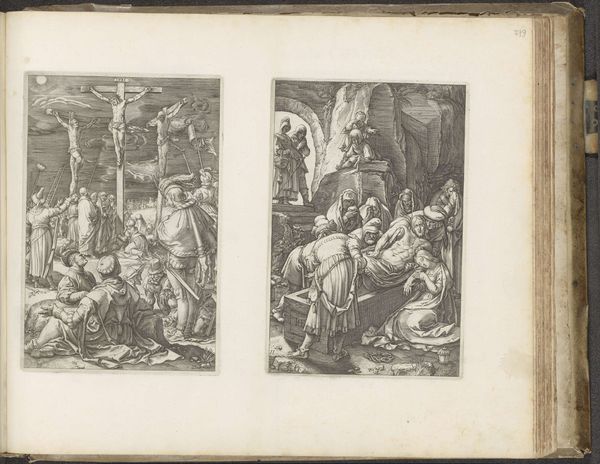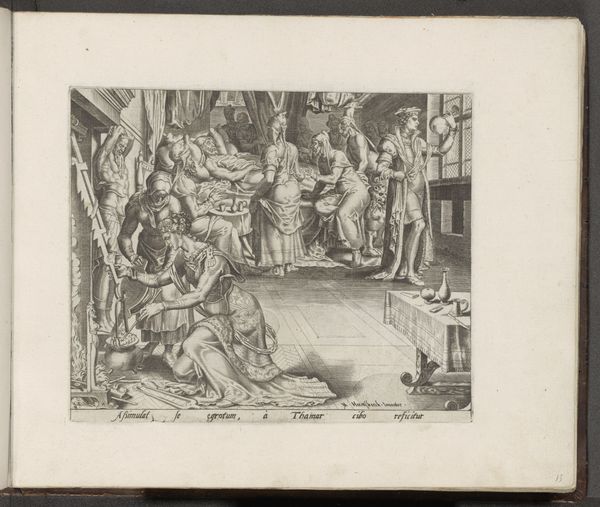
print, engraving
#
aged paper
#
toned paper
#
light pencil work
#
narrative-art
# print
#
sketch book
#
figuration
#
personal sketchbook
#
sketchwork
#
pen-ink sketch
#
line
#
pen work
#
sketchbook drawing
#
history-painting
#
italian-renaissance
#
sketchbook art
#
engraving
Dimensions: height 205 mm, width 248 mm
Copyright: Rijks Museum: Open Domain
Curator: Welcome. Before us is Philips Galle’s engraving, “Amnon stuurt Tamar het huis uit,” dating from the late 16th century, part of the Rijksmuseum's collection. Editor: My first thought is that the aged paper really enhances the drama. The texture almost feels like it’s part of the story’s weight and historical grit, doesn't it? Curator: Indeed. Galle, operating in the late Renaissance, situates this biblical narrative—the expulsion of Tamar by Amnon—within a context of burgeoning print culture. These engravings made previously inaccessible narratives available to a broader public. How do you see the print medium influencing its meaning? Editor: For me, the key is reproduction. Think about how many hands would have been involved in its making; the initial design, the cutting of the plate, the printing, distribution... It’s a production chain that amplifies this cautionary tale, and shapes consumption by, perhaps, merchant-class households. The scale and accessibility speak volumes. Curator: I agree that its domestic consumption is crucial, however, let's not reduce it to a simple cautionary tale. The image plays with visual precedents, borrowing classical motifs, positioning this story of lust and betrayal within a broader historical and moral framework. Galle wasn't simply illustrating a bible passage. Editor: Fair point, but what’s really grabbing my attention is the detail of the architectural backdrop – all rendered meticulously via line engraving. You can practically feel the weight of those stone pillars, the luxurious fabrics, signaling power. It points toward a patron class whose lives mirror some the excesses here. Curator: That focus on wealth and access underscores its complexity. While disseminated widely through prints, these images often served to reinforce social hierarchies and cultural norms of their time. The physicality of the engraving then, acted as a social lubricant. Editor: Absolutely. And for those consuming the image, that materiality provided its own unique kind of meaning. The narrative sinks into them through the paper, ink and labor and perhaps changes their behaviors moving forward? Curator: An important perspective. Considering the historical forces acting on artistic production like Galle’s piece enables us to reflect upon narrative construction within shifting societal norms and cultural values. Editor: Yes. Thinking about that web of material practice also forces a necessary reckoning with the politics embedded within biblical dramas like the expulsion of Tamar, rendered by Philips Galle.
Comments
No comments
Be the first to comment and join the conversation on the ultimate creative platform.
